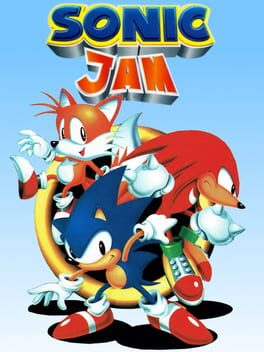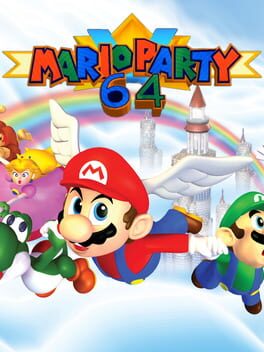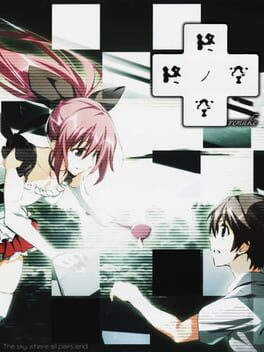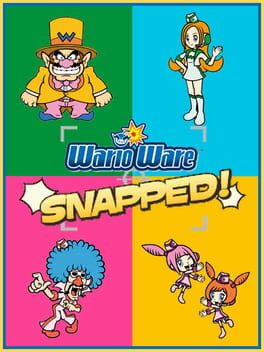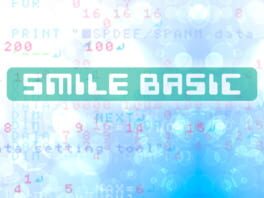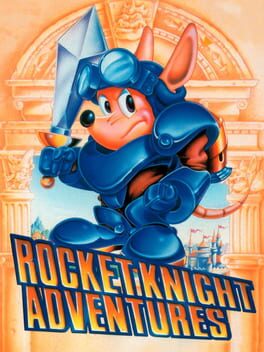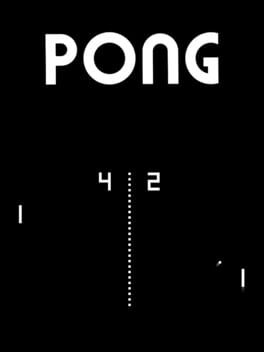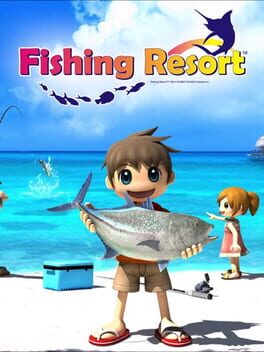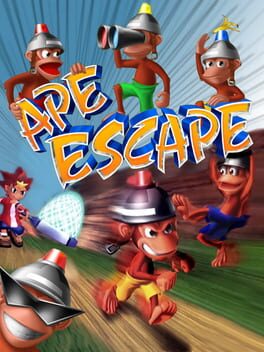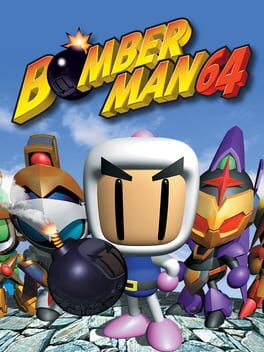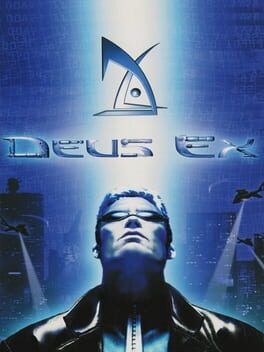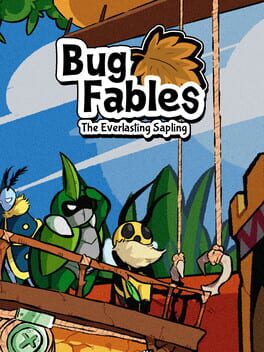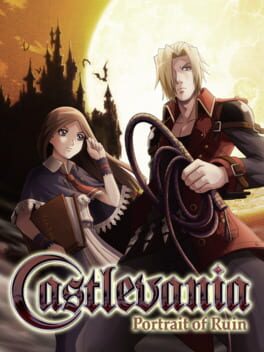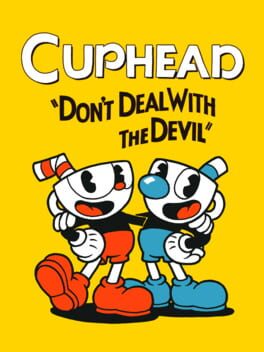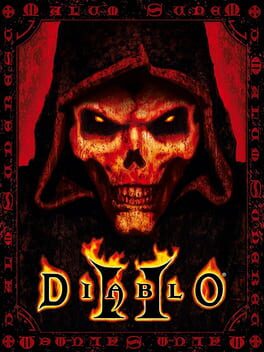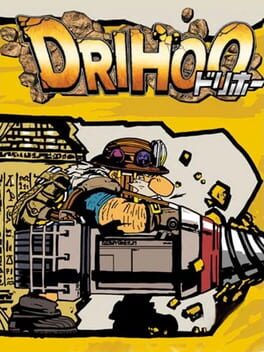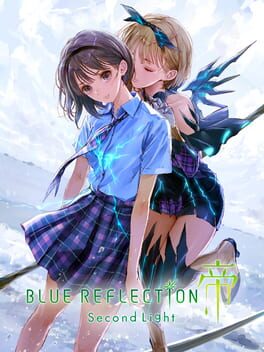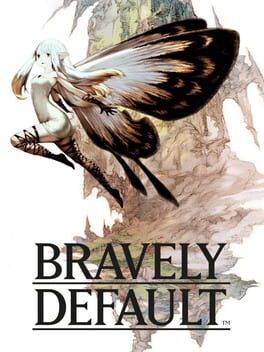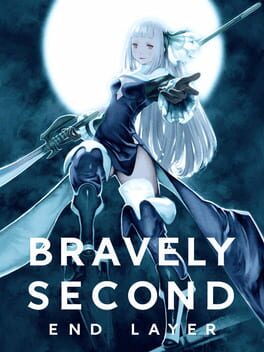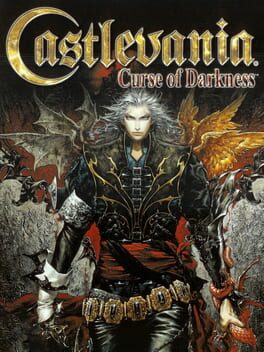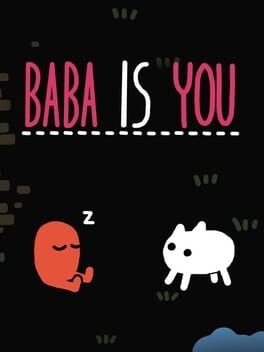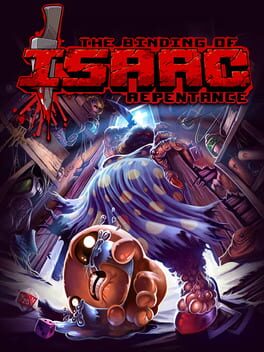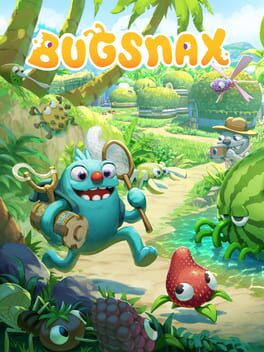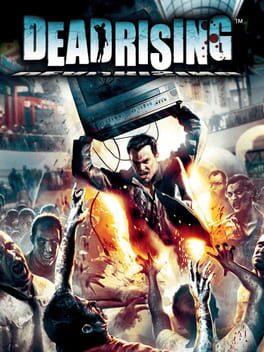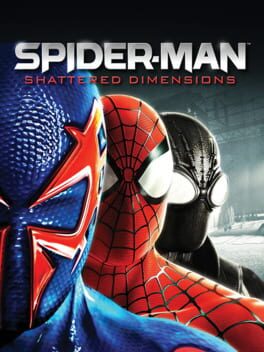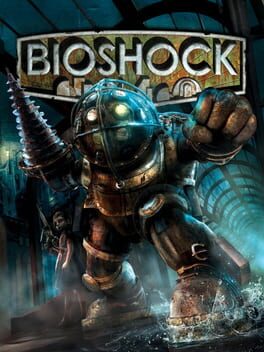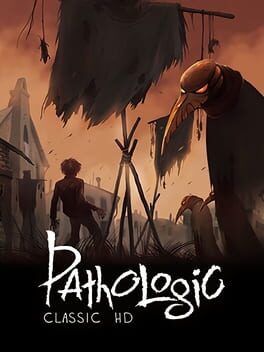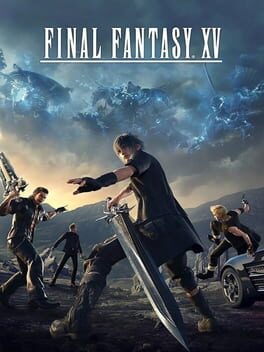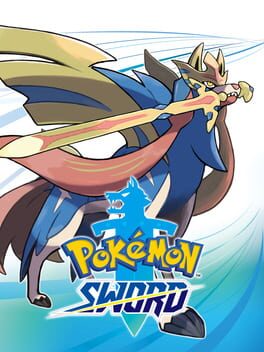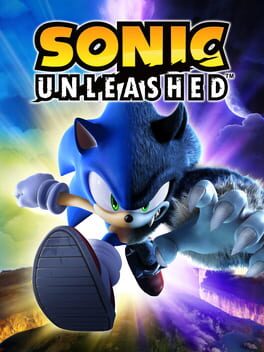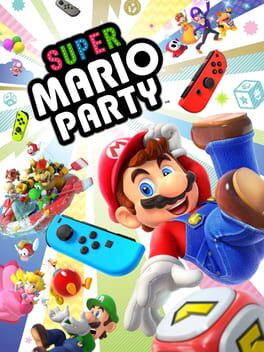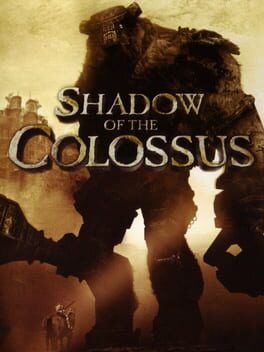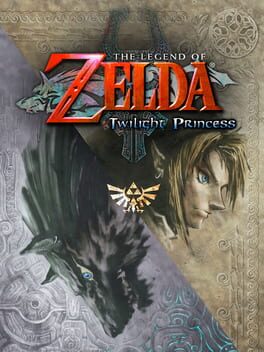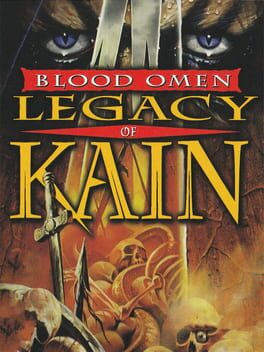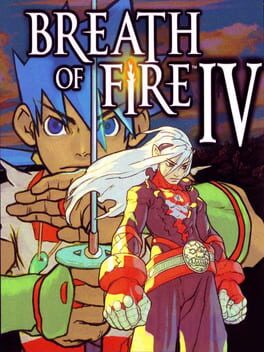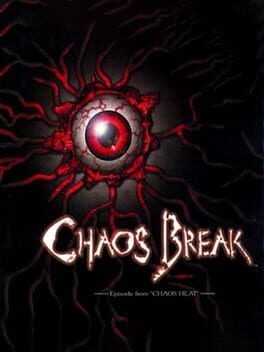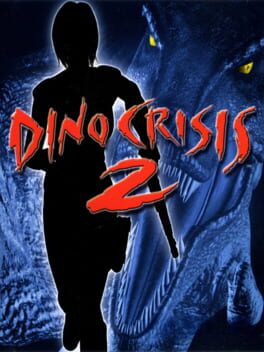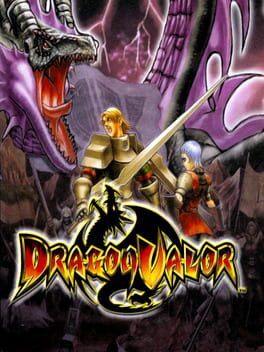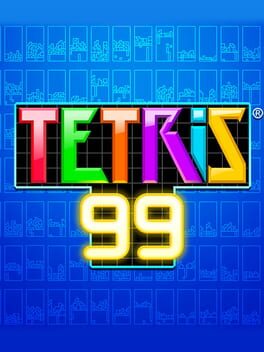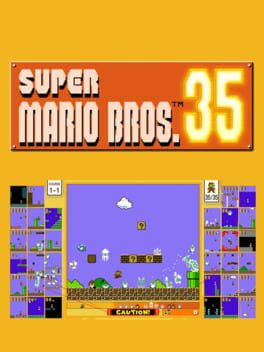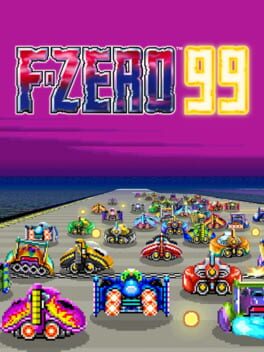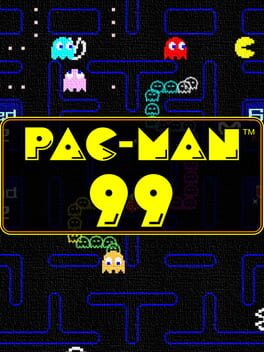6855 reviews liked by whu
Sonic Jam
1997
Finished Sonic World. This is a showcase for what Sonic Adventure could have been on the SEGA Saturn. This is proof that the Nights engine was truly capable of doing beautiful 3D environments with little performance issues. This is a proof of concept that could have been dismissed, but kept as a bonus for Sonic fans wanting a full 3D adventure. This is Sonic Team bringing new SEGA fans into the series with 4 classic games. This is...Sonic Jam!
Mario Party 64
2020
I love this idea and the execution was pretty fun. Making Mario Party minigames into bonus stars is so clever, and the Mario Party 1 boards are fairly diverse so you don't really feel like you're retreading ground in terms of level types.
However, and I'm not sure if this is my computer or settings or what, I kept having minigames crash on me. I couldn't do the one in DK's Jungle Adventure because it wouldn't load, a few of the ones you buy in shops wouldn't load, and probably more I'm forgetting, so I just can't finish this fully. Hell, even the final boss fight with Bowser I couldn't finish because it chose a minigame that wouldn't load.
The palm tree fight was incredible.
However, and I'm not sure if this is my computer or settings or what, I kept having minigames crash on me. I couldn't do the one in DK's Jungle Adventure because it wouldn't load, a few of the ones you buy in shops wouldn't load, and probably more I'm forgetting, so I just can't finish this fully. Hell, even the final boss fight with Bowser I couldn't finish because it chose a minigame that wouldn't load.
The palm tree fight was incredible.
Tsui no Sora Remake
2020
Considering I've already written over 7,000 words on the original Tsui no Sora on this site, I intend to keep things a little shorter for now. My intentions below are to both discuss some route-by-route feelings in comparison to the original game, as well as further ruminate on the philosophical and thematic elements of both Tsui no Sora and Subarashiki Hibi. I'll give a spoiler warning when we jump full-on into dangerously heavy spoiler territory below. Still, mild spoilers for all three games within.
I don't think you need to have played the original game to appreciate the remake, you certainly need Subahibi, though. The original is helpful for understanding some of the deliberate deviations the remake gets at, some of which are pretty major, but you could feasibly play this with just Subahibi under your belt and get 85% of the point. It's hard to image what sort of impression the remake would land if not taken as an addition to the previous iterations of this story. I think above all else, SCA-Ji was able to more directly address additional influences over the original Tsui no Sora in the remake. Not only did he buckle down and more directly address the most obvious influence, being Nietzsche and particularly Zarathustra, but the influences of Spinoza and Lovecraft are even more clearly dug into and elaborated upon here in ways that are rewarding if you've spent time thinking about Subahibi for as long as many of us have.
Presentation-wise, the remake is a very interesting hodgepodge of KeroMakura styles and talents. Motoyon and SCA-Ji both take lead artistic roles here, and while SCA-Ji very much still draws in the same style he has since around the H2O and Subahibi days, Motoyon was clearly already adjust his style for the upcoming Sakura no Toki and so it comes off much more modernized. Motoyon also did most of the CGs, which are absolutely beautiful. Rarely as abstract as some of Subahibi's, but beautiful nontheless.
This sort of disorientation is largely supplemented by the fact that many background elements are ripped right from Subahibi, and the soundtrack is pretty much all the original ~15 second loops from the original Tsui no Sora. ... Until this isn't the case from Fourth View onwards, where elements of Subahibi begin to melt in from the soundtrack to a few pieces of CGs. The voice cast is largely different, and the only people who reprise their roles from Subarashiki Hibi do so with intent. Largely great performances all around. Each of the ending themes is an instrumental remix of one of the Tsui no Sora tracks and they're all fantastic. I think my favorites were Third View and Numinöse II.
On a route by route basis -
First View was a bit different from the original, largely in how it characterizes Yukito. I really liked the more grounded and empathetic view of his character this time around, and I wouldn't say it "replaces" the original because they're largely coming from places with different intentions. Otherwise, note for note, extremely faithful to the original everywhere it should've been. Second View was definitely interesting. There were a few moments of characterization missing that I loved in the original, even if they were small beats, and at first I wasn't sure how I felt about it. But once the plot started ramping up and the big deviations from the original plotline kicked in, largely revolving around Yasuko's feelings towards Kotomi I ended up absolutely loving it. Despite some minor nitpicks in the first half it's absolutely a stronger version of this story line. I have little in the way of notes for Third Route. It's just a straight up improvement over the original in every way. Admittedly cried to the ending.
... And that's where things got really interesting.
Massive spoilers for the remake and Subarashiki Hibi below.
I had heard tell that Yasuko of all characters was the protagonist of a new route in the remake, but somehow I wasn't expecting it to be earlier in the game than Takuji. I also wasn't expecting it to be arguably the best part of the game. She's simply one of SCA-Ji's best characters I've yet to experience. A deeply morally conflicting character who scratches directly at the wound that plagues every iteration of this story - the incessant babbling about existentialism and purposelessness of life means nothing in the face of love. And Yasuko is a character who has had her humanity stripped from her by force - but still clings to the subconscious believe that love is worth fighting for. You can say she's really fucked up for how she tries to get with Kotomi and you're definitely right, but by the end of the route, when she and Kiyoshi just get to have that heart to heart... shit, man, that's the point of the whole story. That's what each version of this game has been trying to say since 1999. Even if SCA-Ji himself couldn't have put it into words yet.
Final View was certainly interesting. I really loved that some of the abstract visions from the original game were left intact, 1999 artwork against 2010 backgrounds and all. I also really enjoyed how much Takuji and Riruru were given time to expand upon their relationship to one another. One of the strongest elements of the remake's stab at this story is how much it points its cast in the direction of "reality of the heart". In the same way that Yasuko had to come to terms with her feelings for Kotomi, Takuji has to do the same for Yukito - the nature of those feelings may be vague, but I chose to interpret it as an attraction of the mind. Maybe there's some homo-eroticism in there and I wouldn't deny that, but I think it's more that Takuji sees a home and a place of understanding in Yukito. I'm... gonna have to sit with the moment he hears Kimika's voice and unbox why that was for a minute. It's the most confounding and jaw-dropping moment in the entire route and it's gone within a second. Again, there are a few minor things I do miss from the original, especially some of the more abstract denpa effects like Riruru's number spiral form or the eyeball bleeding into the pool, but this version of Final View has many aspects that undeniably surpass the original and at the very least do the series as a whole serious justice.
And then there's the Numinöse duology. Numinöse I seems largely unchanged from the original, but that's fine - I already like that ending more than most. Numinöse II has some interesting changes itself, and the duology as a whole stands as a rather interesting conclusion to the series overall. I'm happy that SCA-Ji keeps it vague and never actually explains what Ayana is. The Nyarlathotep explanation is an interesting proposition, the Cthulhu explanation is also interesting, and the way she molds and shifts around her necessities and whims, or those of others... all interesting. As far as where I stand on Ayana, and the purpose of the End Sky itself? Well...
First off, it was incredibly gratifying to get SCA-Ji backing me up on my original read of what the End Sky represents - it's the doorway to an Übermenschian evolution, the discarding of humanity and subjectivity to become, as Riruru and Ayana put it, a "third-dimensional existence". I think this is the purpose of Yasuko saying what she does on the rooftop to Takuji - to discard humanity is to discard our ability to love, because love is founded in perception and irrational thought. It's not so much that the End Sky exists, or that it doesn't - it appears in many ways to many people, as an escape, as an evolution, as an ending. Perhaps that's why Kimika's voice reaches Takuji in the end, as a reminder that he is human, and is capable of a love that transcends his own delusions. I've said it before, and I'll say it again - Down the Rabbit-Hole I and the "good endings" of Subahibi are the entire point. They're the response SCA-Ji makes to himself and his work in Tsui no Sora, and now he's returned to this early work and planted seeds of that answer into the bleak and hopeless place he left behind in 1999. I do believe the only presence that actually does sit above humanity in all of this is Ayana - who is more of an idea than a tangible thing. I think you can rationalize that existence many ways: a monster, a schoolgirl, a cosmic terror, a god, a magical girl - but ultimately, Ayana is objectivity. She is the third-dimensional existence that plays out stories and creates scenarios for the purpose of understanding humanity. And if it's not directly her doing - though clarity on that isn't really necessary - then she's merely observing. It's not that she's cold, it's not that she's cruel, feelings just don't process for her. It's all an imitation or an attempt to emulate expression. But that begs the question, which she asks Yasuko - what's the difference in attempting to understand and engage with human emotion and actually having those emotions, considering neither exist on the plane of logical thinking or rationality either way? Where does the line blur between emulation and experience? Fantasy and reality? Truth or feelings? An ending or a beginning? Takuji or Yukito? Ayana or Kotomi? The End Sky. The unreachable all-knowingness that we seek in spite of its non-existence. Human ambition. Yearning to understand. Indulgence in sophistry. The answer was already in front of us. Live happily in the wonderful everyday.
SCA-Ji is the fucking man. That's the be-all-end-all of this whole thing.
I don't think you need to have played the original game to appreciate the remake, you certainly need Subahibi, though. The original is helpful for understanding some of the deliberate deviations the remake gets at, some of which are pretty major, but you could feasibly play this with just Subahibi under your belt and get 85% of the point. It's hard to image what sort of impression the remake would land if not taken as an addition to the previous iterations of this story. I think above all else, SCA-Ji was able to more directly address additional influences over the original Tsui no Sora in the remake. Not only did he buckle down and more directly address the most obvious influence, being Nietzsche and particularly Zarathustra, but the influences of Spinoza and Lovecraft are even more clearly dug into and elaborated upon here in ways that are rewarding if you've spent time thinking about Subahibi for as long as many of us have.
Presentation-wise, the remake is a very interesting hodgepodge of KeroMakura styles and talents. Motoyon and SCA-Ji both take lead artistic roles here, and while SCA-Ji very much still draws in the same style he has since around the H2O and Subahibi days, Motoyon was clearly already adjust his style for the upcoming Sakura no Toki and so it comes off much more modernized. Motoyon also did most of the CGs, which are absolutely beautiful. Rarely as abstract as some of Subahibi's, but beautiful nontheless.
This sort of disorientation is largely supplemented by the fact that many background elements are ripped right from Subahibi, and the soundtrack is pretty much all the original ~15 second loops from the original Tsui no Sora. ... Until this isn't the case from Fourth View onwards, where elements of Subahibi begin to melt in from the soundtrack to a few pieces of CGs. The voice cast is largely different, and the only people who reprise their roles from Subarashiki Hibi do so with intent. Largely great performances all around. Each of the ending themes is an instrumental remix of one of the Tsui no Sora tracks and they're all fantastic. I think my favorites were Third View and Numinöse II.
On a route by route basis -
First View was a bit different from the original, largely in how it characterizes Yukito. I really liked the more grounded and empathetic view of his character this time around, and I wouldn't say it "replaces" the original because they're largely coming from places with different intentions. Otherwise, note for note, extremely faithful to the original everywhere it should've been. Second View was definitely interesting. There were a few moments of characterization missing that I loved in the original, even if they were small beats, and at first I wasn't sure how I felt about it. But once the plot started ramping up and the big deviations from the original plotline kicked in, largely revolving around Yasuko's feelings towards Kotomi I ended up absolutely loving it. Despite some minor nitpicks in the first half it's absolutely a stronger version of this story line. I have little in the way of notes for Third Route. It's just a straight up improvement over the original in every way. Admittedly cried to the ending.
... And that's where things got really interesting.
Massive spoilers for the remake and Subarashiki Hibi below.
I had heard tell that Yasuko of all characters was the protagonist of a new route in the remake, but somehow I wasn't expecting it to be earlier in the game than Takuji. I also wasn't expecting it to be arguably the best part of the game. She's simply one of SCA-Ji's best characters I've yet to experience. A deeply morally conflicting character who scratches directly at the wound that plagues every iteration of this story - the incessant babbling about existentialism and purposelessness of life means nothing in the face of love. And Yasuko is a character who has had her humanity stripped from her by force - but still clings to the subconscious believe that love is worth fighting for. You can say she's really fucked up for how she tries to get with Kotomi and you're definitely right, but by the end of the route, when she and Kiyoshi just get to have that heart to heart... shit, man, that's the point of the whole story. That's what each version of this game has been trying to say since 1999. Even if SCA-Ji himself couldn't have put it into words yet.
Final View was certainly interesting. I really loved that some of the abstract visions from the original game were left intact, 1999 artwork against 2010 backgrounds and all. I also really enjoyed how much Takuji and Riruru were given time to expand upon their relationship to one another. One of the strongest elements of the remake's stab at this story is how much it points its cast in the direction of "reality of the heart". In the same way that Yasuko had to come to terms with her feelings for Kotomi, Takuji has to do the same for Yukito - the nature of those feelings may be vague, but I chose to interpret it as an attraction of the mind. Maybe there's some homo-eroticism in there and I wouldn't deny that, but I think it's more that Takuji sees a home and a place of understanding in Yukito. I'm... gonna have to sit with the moment he hears Kimika's voice and unbox why that was for a minute. It's the most confounding and jaw-dropping moment in the entire route and it's gone within a second. Again, there are a few minor things I do miss from the original, especially some of the more abstract denpa effects like Riruru's number spiral form or the eyeball bleeding into the pool, but this version of Final View has many aspects that undeniably surpass the original and at the very least do the series as a whole serious justice.
And then there's the Numinöse duology. Numinöse I seems largely unchanged from the original, but that's fine - I already like that ending more than most. Numinöse II has some interesting changes itself, and the duology as a whole stands as a rather interesting conclusion to the series overall. I'm happy that SCA-Ji keeps it vague and never actually explains what Ayana is. The Nyarlathotep explanation is an interesting proposition, the Cthulhu explanation is also interesting, and the way she molds and shifts around her necessities and whims, or those of others... all interesting. As far as where I stand on Ayana, and the purpose of the End Sky itself? Well...
First off, it was incredibly gratifying to get SCA-Ji backing me up on my original read of what the End Sky represents - it's the doorway to an Übermenschian evolution, the discarding of humanity and subjectivity to become, as Riruru and Ayana put it, a "third-dimensional existence". I think this is the purpose of Yasuko saying what she does on the rooftop to Takuji - to discard humanity is to discard our ability to love, because love is founded in perception and irrational thought. It's not so much that the End Sky exists, or that it doesn't - it appears in many ways to many people, as an escape, as an evolution, as an ending. Perhaps that's why Kimika's voice reaches Takuji in the end, as a reminder that he is human, and is capable of a love that transcends his own delusions. I've said it before, and I'll say it again - Down the Rabbit-Hole I and the "good endings" of Subahibi are the entire point. They're the response SCA-Ji makes to himself and his work in Tsui no Sora, and now he's returned to this early work and planted seeds of that answer into the bleak and hopeless place he left behind in 1999. I do believe the only presence that actually does sit above humanity in all of this is Ayana - who is more of an idea than a tangible thing. I think you can rationalize that existence many ways: a monster, a schoolgirl, a cosmic terror, a god, a magical girl - but ultimately, Ayana is objectivity. She is the third-dimensional existence that plays out stories and creates scenarios for the purpose of understanding humanity. And if it's not directly her doing - though clarity on that isn't really necessary - then she's merely observing. It's not that she's cold, it's not that she's cruel, feelings just don't process for her. It's all an imitation or an attempt to emulate expression. But that begs the question, which she asks Yasuko - what's the difference in attempting to understand and engage with human emotion and actually having those emotions, considering neither exist on the plane of logical thinking or rationality either way? Where does the line blur between emulation and experience? Fantasy and reality? Truth or feelings? An ending or a beginning? Takuji or Yukito? Ayana or Kotomi? The End Sky. The unreachable all-knowingness that we seek in spite of its non-existence. Human ambition. Yearning to understand. Indulgence in sophistry. The answer was already in front of us. Live happily in the wonderful everyday.
SCA-Ji is the fucking man. That's the be-all-end-all of this whole thing.
A certain youtuber has popularized a certain meme that this game “makes you feel like Batman” but honestly this game makes you feel as batman as any other action character I can think of.
Many would hail the Arkham series as one of the best adaptations of capeshit within the video game landscape, but really the competition just isn’t all that tough to begin with. To my knowledge, the only ones that people even respect to a very high degree in the first place are the recent Spidey games by Insomniac and the beloved Lego games which are still honestly pretty brain-dead games. Honestly though, this game is just as simple as those lego games but it works very well for the most part.
One thing these games do that “makes you feel like Batman” is definitely its presentation. The sparse use of colors with everything tending to be very dark and monotone really sells that this is indeed a batman game that can be placed quite comfortably with its other incarnations in other mediums such as the Nolan movies or the original animated series. Maybe it's just me but the animation models how Batman runs and fights also feel awfully familiar to how you’d see him in the cartoon or comics recreating that campy feeling. Surprisingly it doesn’t clash at all with the overly serious grimdark setting of Arkham and just feels like another episode of Batman’s adventures.
Though despite being an iteration of Batman’s adventures, this is honestly quite light on the storytelling for what happens to be a superhero story. Basically, Batman puts Joker into Arkham only for it to be a trap where Joker then proceeds to put Batman into his playground against his rogue’s gallery. This is effective in platforming this action game but doesn’t really make the player really pay attention to the actual narrative beyond “whoa Batman is up against this villain next”. Granted, it honestly doesn’t have to be anything more than what it is since its fun for what it’s worth in running around Arkham Asylum in the first place.
The gameplay is honestly just pretty good, but nothing actually substantial. I’m quite disappointed that the combat has this weird auto-lock to enemies where you don’t really have to control Batman’s direction all that much and really just mash the attack button while occasionally using the counter button whenever the visual indicator for it appears. What’s the actual highlight however is definitely the exploration and stealth in trying to maneuver through the different buildings without getting caught and solving easy but interesting puzzles on the way to your next destination. This part really does feel like an episode of BTAS where Batman has to solve a situation a villain has put him through which I do appreciate.
I like Batman Arkham Asylum. If you like the caped crusader, it's definitely a game worth playing. One thing I forgot to mention actually is the element of horror of the unknown in being in an asylum which I found very engaging. This is especially heightened with the Scarecrow segments which really got me immersed as this being a Batman story. Sometimes the models and combat can feel a bit stiff though, but that is more so because it's a PS3 game more than anything. Good time to be had with this one, worth the 15 hours I put into it.
Many would hail the Arkham series as one of the best adaptations of capeshit within the video game landscape, but really the competition just isn’t all that tough to begin with. To my knowledge, the only ones that people even respect to a very high degree in the first place are the recent Spidey games by Insomniac and the beloved Lego games which are still honestly pretty brain-dead games. Honestly though, this game is just as simple as those lego games but it works very well for the most part.
One thing these games do that “makes you feel like Batman” is definitely its presentation. The sparse use of colors with everything tending to be very dark and monotone really sells that this is indeed a batman game that can be placed quite comfortably with its other incarnations in other mediums such as the Nolan movies or the original animated series. Maybe it's just me but the animation models how Batman runs and fights also feel awfully familiar to how you’d see him in the cartoon or comics recreating that campy feeling. Surprisingly it doesn’t clash at all with the overly serious grimdark setting of Arkham and just feels like another episode of Batman’s adventures.
Though despite being an iteration of Batman’s adventures, this is honestly quite light on the storytelling for what happens to be a superhero story. Basically, Batman puts Joker into Arkham only for it to be a trap where Joker then proceeds to put Batman into his playground against his rogue’s gallery. This is effective in platforming this action game but doesn’t really make the player really pay attention to the actual narrative beyond “whoa Batman is up against this villain next”. Granted, it honestly doesn’t have to be anything more than what it is since its fun for what it’s worth in running around Arkham Asylum in the first place.
The gameplay is honestly just pretty good, but nothing actually substantial. I’m quite disappointed that the combat has this weird auto-lock to enemies where you don’t really have to control Batman’s direction all that much and really just mash the attack button while occasionally using the counter button whenever the visual indicator for it appears. What’s the actual highlight however is definitely the exploration and stealth in trying to maneuver through the different buildings without getting caught and solving easy but interesting puzzles on the way to your next destination. This part really does feel like an episode of BTAS where Batman has to solve a situation a villain has put him through which I do appreciate.
I like Batman Arkham Asylum. If you like the caped crusader, it's definitely a game worth playing. One thing I forgot to mention actually is the element of horror of the unknown in being in an asylum which I found very engaging. This is especially heightened with the Scarecrow segments which really got me immersed as this being a Batman story. Sometimes the models and combat can feel a bit stiff though, but that is more so because it's a PS3 game more than anything. Good time to be had with this one, worth the 15 hours I put into it.
WarioWare: Snapped!
2008
SmileBasic
2015
One of the more under-appreciated mascots of the 16-bit era. Rocket Knight Adventures feels like it was crafted with love, being one of the best looking games on the Sega Genesis.
An action platformer with a rocket boost mechanic, the game feels like Donkey Kong Country with the ability to shoot out of a blast barrel at will. Absolutely satisfying gameplay and Konami knocked it out of the park on their first try.
Difficulty is hard but fair. If you play with unlimited continues, the challenge level is somewhere around the challenge of a souls game, maybe a little easier. Bosses are easily the best part of the game.
I remember being super impressed by all the setpieces in this game, and now having finished the game, the setpieces absolutely do not slow down until the credits roll. Quite impressive again for a Genesis tile. Pls bring this boy back Konami.
An action platformer with a rocket boost mechanic, the game feels like Donkey Kong Country with the ability to shoot out of a blast barrel at will. Absolutely satisfying gameplay and Konami knocked it out of the park on their first try.
Difficulty is hard but fair. If you play with unlimited continues, the challenge level is somewhere around the challenge of a souls game, maybe a little easier. Bosses are easily the best part of the game.
I remember being super impressed by all the setpieces in this game, and now having finished the game, the setpieces absolutely do not slow down until the credits roll. Quite impressive again for a Genesis tile. Pls bring this boy back Konami.
Pong
1972
Half-Century Challenge Series: https://www.backloggd.com/u/C_F/list/half-century-challenge/
HCC #3 = Pong (1972)
If there is any game that can be called synonymous with video games, it's Pong. When the term "video game" was first coined, it was because the average gamer experience consisted of playing something like tennis or ping pong on their TV. It's no coincidence the term "video game" came into mass usage during the early 1970s, right when Pong exploded.
The importance of Pong cannot be overstated. Dedicated Pong consoles, arcade cabinets, Atari ports, etc all rose into prominence. The idea of porting a game a million times for accessibility, and the sheer mass appeal Pong had over prior 0 player games or text adventures? It's breathtaking how much came out of the game. Remember, just 10 years prior if one wanted to play Space War, there were only a couple locations on earth where they could do so. Pong was even designed with controllers in mind, an early prototype to things like the Atari controller and by proxy controllers by companies like Nintendo or Sega.
One could even call it the genesis point of multiplayer gaming. Being able to play against both AI and another human was beyond novel. Fighting game arcade modes? They owe their thanks to Pong. Which in hindsight, makes it funny that my first time playing Pong was via the embedded port in Mortal Kombat 2. You see, in Mortal Kombat 2 if you win 250 matches in a row, you get to play one round of pong. So one evening as a child, I spent what must have been 2 or 3 hours killing the fake player 2 in my copy of MK2, just to play Pong for 30 seconds. I felt like I had been massively trolled.
That tangent aside, I brought up mini consoles earlier. Indeed, even Nintendo got their start in the game industry with the Color TV Game 6 which was directly inspired by Pong's success. Let alone the NES Classic Mini and SNES Classic Mini some half century later.
It would be easy for me to look at Pong and go "who gives a fuck" but honestly, I can't help but admire this abstract world with nothing more than a few white pixels. Everything comes from something. Even if it's not the most fun game to a newcomer in 2024, it still has plenty of usages. After all, it's a great project to recreate in languages like GML for the sake of learning game development. In fact, a friend and I actually did that for a narrative driven minigame compilation game a while back. https://c-fhacks.itch.io/aikon
With its sheer influence on the industry, the fact it's so helpful for learning game development, and that it's perfectly playable, Pong deserves this score. Perhaps even higher.
Next time: Maze (1973)
HCC #3 = Pong (1972)
If there is any game that can be called synonymous with video games, it's Pong. When the term "video game" was first coined, it was because the average gamer experience consisted of playing something like tennis or ping pong on their TV. It's no coincidence the term "video game" came into mass usage during the early 1970s, right when Pong exploded.
The importance of Pong cannot be overstated. Dedicated Pong consoles, arcade cabinets, Atari ports, etc all rose into prominence. The idea of porting a game a million times for accessibility, and the sheer mass appeal Pong had over prior 0 player games or text adventures? It's breathtaking how much came out of the game. Remember, just 10 years prior if one wanted to play Space War, there were only a couple locations on earth where they could do so. Pong was even designed with controllers in mind, an early prototype to things like the Atari controller and by proxy controllers by companies like Nintendo or Sega.
One could even call it the genesis point of multiplayer gaming. Being able to play against both AI and another human was beyond novel. Fighting game arcade modes? They owe their thanks to Pong. Which in hindsight, makes it funny that my first time playing Pong was via the embedded port in Mortal Kombat 2. You see, in Mortal Kombat 2 if you win 250 matches in a row, you get to play one round of pong. So one evening as a child, I spent what must have been 2 or 3 hours killing the fake player 2 in my copy of MK2, just to play Pong for 30 seconds. I felt like I had been massively trolled.
That tangent aside, I brought up mini consoles earlier. Indeed, even Nintendo got their start in the game industry with the Color TV Game 6 which was directly inspired by Pong's success. Let alone the NES Classic Mini and SNES Classic Mini some half century later.
It would be easy for me to look at Pong and go "who gives a fuck" but honestly, I can't help but admire this abstract world with nothing more than a few white pixels. Everything comes from something. Even if it's not the most fun game to a newcomer in 2024, it still has plenty of usages. After all, it's a great project to recreate in languages like GML for the sake of learning game development. In fact, a friend and I actually did that for a narrative driven minigame compilation game a while back. https://c-fhacks.itch.io/aikon
With its sheer influence on the industry, the fact it's so helpful for learning game development, and that it's perfectly playable, Pong deserves this score. Perhaps even higher.
Next time: Maze (1973)
